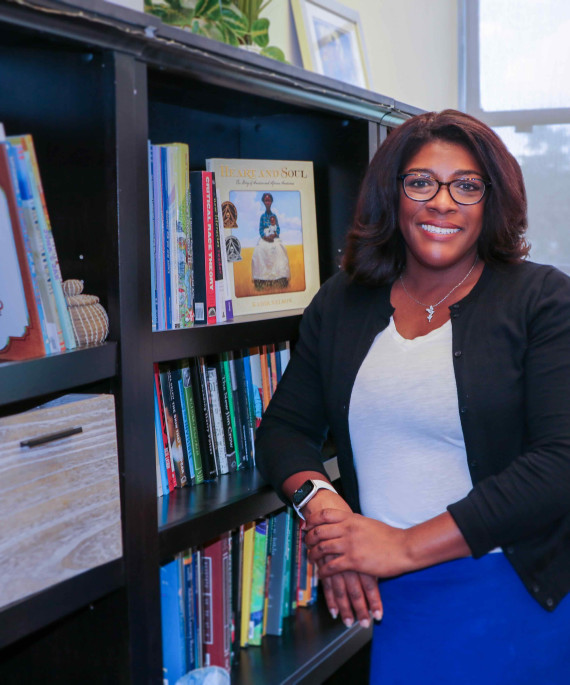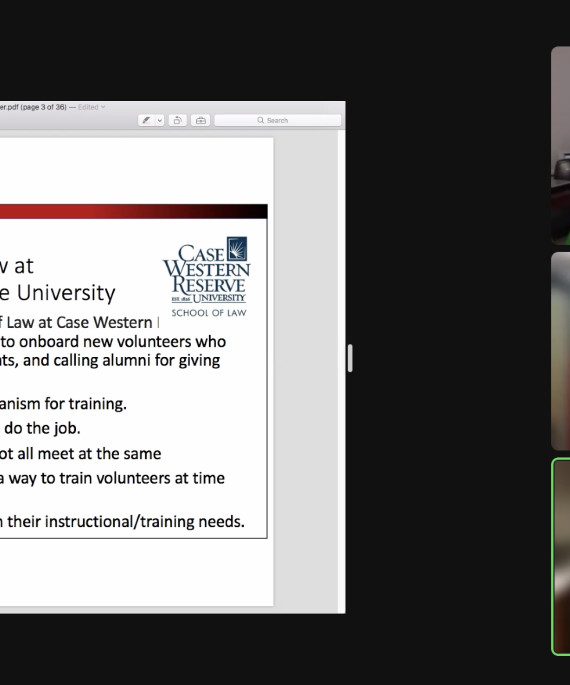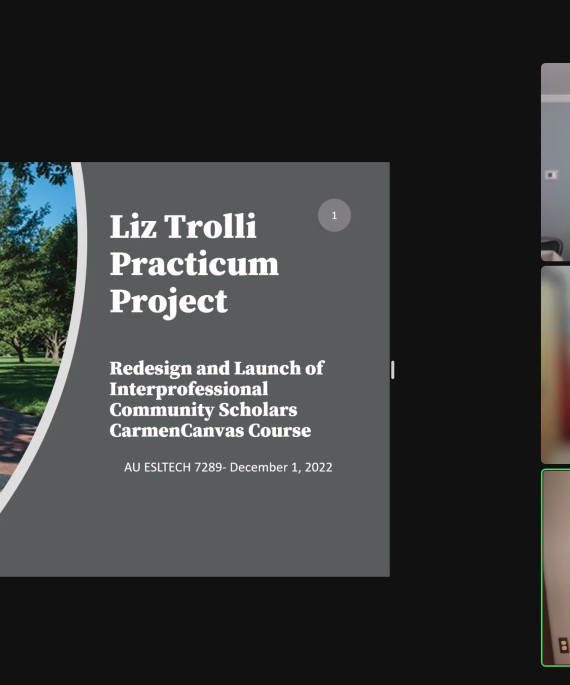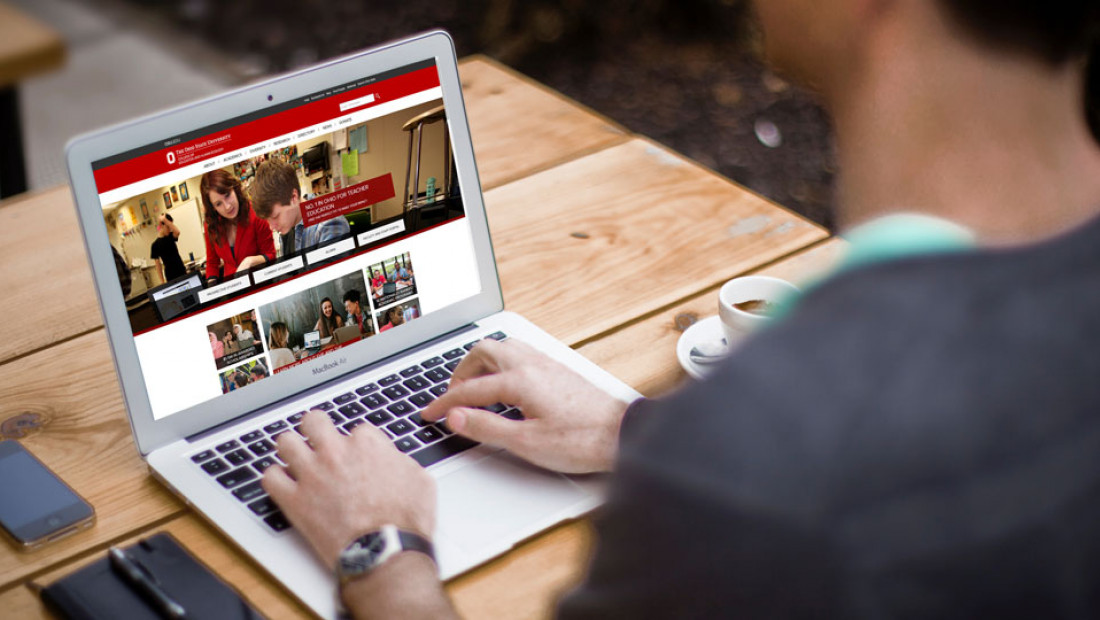
The online Master of Learning Technologies program in the College of Education and Human Ecology climbed to No. 20 in the U.S. News and World Report rankings for 2021. It improved in reputation among the "Best Online Graduate Education Programs" for the last two years.
The four-year-old program provides students with the professional expertise to support learning with technology in education, corporate, nonprofit, government settings and more.
The streamlined curriculum is tailored for part-time and full-time students.
“Students in the program create rich portfolios as learning technologists,” said Ana-Paula Correia, associate professor and co-coordinator of the master’s program. “They combine knowledge with application, often fulfilling needs on the job. That’s what employers are looking for.”
“The 30 hours of required, online courses range from theory-driven topics to applied courses on instructional design, videography and multimedia.”
Rick Voithofer, associate professor and co-coordinator who initially created the program, named a key feature that equals a quality online learning experience.
“An online program doesn’t function well unless it’s supported by more than the faculty,” he said. “From day one, our department’s student services is incredibly responsive to online students in setting up communications.
“In addition, our university-level infrastructure offers 24/7 tech support, the college’s Academic Technology team assists students during business hours, and we have a broad suite of online learning tools.”
Kui Xie, associate professor and Cyphert Distinguished Professor, emphasized that program quality is the faculty’s first consideration.
“We first made sure courses were designed according to pedagogical principles. We ensure that students have authentic projects, and we use selected, up-to-date articles to guide course reading rather than texts.”
“We also work to prevent isolation, a frequent disadvantage of online programs,” Xie said. “An app lets us see each other on the same screen so students and faculty get to know each other.”
Quality also comes from results of each faculty member’s research, which they apply back to the courses, and they pay close attention to students’ course evaluations and feedback.
“We make minor revisions to courses all the time,” Xie said. “Our first refresh of the entire program will come at the end of this academic year and repeat every three years.”
The practicum experience: Elevating real-world learning
A highlight of the highly competitive program is the required, real-world practicum.
Each student is admitted to the program to work with a specific faculty advisor. Mentoring is especially valuable as students decide on their practicum experience. They may choose a subject related to their work or to an outside interest.
Alumnus Patrick Littrell, ’18 MLT, focused on creating more meaningful ways for students to use their laptops in his social studies classes. The Colorado teacher then developed an overall strategy to train the rest of the teachers at Fountain Middle School. He created a manual and website to house the district’s paid, academic, technology-based programs that teachers are required to learn and use.
Teachers tell Littrell his work has helped them use technology more effectively in the classroom. Students also benefit directly because Littrell tied each program and teaching strategy to the school’s plan to improve all students’ academic achievement.
“Completing the MLT program at Ohio State has really put me in a great place,” he said. “I am a technology leader among my peers, lead teacher and a valued asset to my school and district.
“I recommend the MLT program to all current and new educators who seek a program to significantly improve their ability to make 21st century learners.”
Alumna Karen Bruce Wallace, ’18 MLT, is a learning and performance specialist at Nationwide Insurance. She worked full time in neonatology at Nationwide Children’s Hospital while completing the MLT program and used her learning to deliver real value to her employer.
In her practicum experience, Bruce Wallace worked in consultation with neonatal nurse practitioners to design online training for neonatal nurses.
"My practicum gave me the opportunity to do meaningful work, helping new nurses gain the skills and knowledge they need to take care of very sick babies,” she said. “It also prepared me for the real world of instructional design work. I was able to take a position as an e-learning designer and developer soon after graduating."
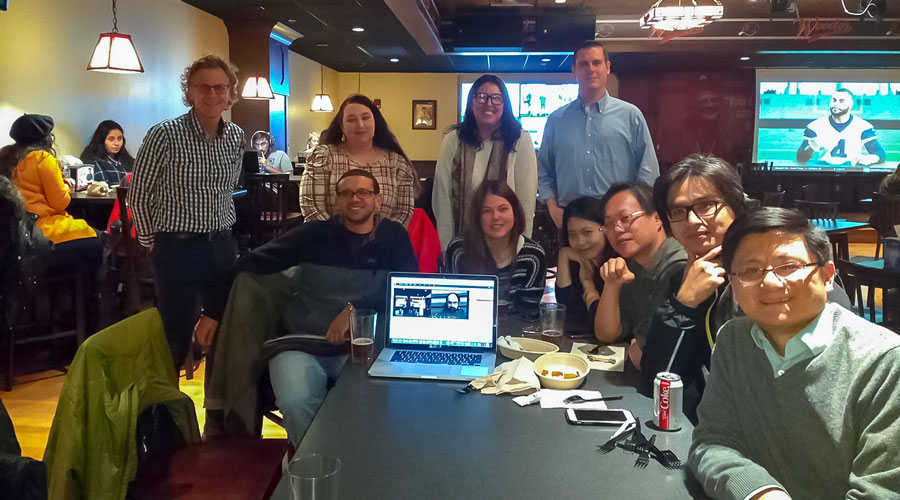
Creating community in an online program
The team emphasizes a high-level of teaching and the importance of social presence in the online courses. The faculty intentionally foster an online learning community that goes beyond class.
To boost social presence, last semester the faculty hosted a virtual gathering for all students at Woody’s Tavern, an eatery at Ohio State’s student union.
The event allowed online students to see and interact with Columbus students in the Learning Technologies master’s and doctoral programs.
They used Correia’s laptop camera and screen to connect with the students. Senior Lecturer Tracey Stuckey-Mickell, who teaches remotely and understands exactly what students experience, also attended. Carmen Connect, the university’s synchronous online learning platform, lets everyone see each other and chat.
“Everyone introduced themselves in an informal way, as you would at a party,” Correia said, “Students talked about their classes, their professional backgrounds and future plans. It was a low-key event, but students truly enjoyed it.”
The Master of Learning Technologies program is accepting applications for the next academic year now through March 1.
For questions, contact the Department of Educational Studies Office of Student Services and Graduate Studies at tles@osu.edu or at 614-688-4007.
U.S. News and World Report evaluates programs based on four general categories: participation in courses, services and technology, faculty credentials and training and expert opinion.
Transcript for the Master of Learning Technologies video, (on focus pressing Enter will reveal the transcript text).
Speaker 1:
Are you ready to advance in the field of learning technologies? The Ohio State University's online Master of Learning Technologies program will give you the skills you need to succeed in multiple sectors of education.
You'll be taught by Ohio State's distinguished faculty from the College of Education and Human Ecology. Our faculty collaborate on curriculum to ensure that you receive both theoretical and practical training covering a range of topics including instructional design, technology skills, applying research, evaluation and assessment, and learning theory.
"What is really unique about this program is that you build your portfolio as you go so by the end of this program you already have collected many artifacts that you've been developing in different courses. Other programs probably have one or two artifacts that the students will develop during the practicum or the capstone.
In our program students develop artifacts in each class." Throughout the online program you'll work with your academic advisor to tailor the curriculum to your professional goals. You'll also have access to student services like online office hours and social media channels to help you connect with and learn from other students in the program.
"The number one reason that I would say students should come to Ohio State to pursue this particular program is to really learn from our faculty and learn about research and learn about how you can have this program applicable to multiple ways of your personal life or professional life and how you want to grow in technology. I think that's what makes it such a special program and that we really really want to listen to our students because we knew this is something that was changing."
The online format enables you to complete the degree in just over two years if attending part-time. Upon graduation you'll be prepared to take on positions as an instructional designer, educational technologist, technology integration specialist, media specialist, director of instructional technology, trainer, curriculum developer, or an online teacher. "I've had the opportunity to work on projects with a group of people and my favorite part of these projects and group work is that the project feels like I can apply it to real life like it matters it's doing something.
It's not just busywork. Plus these people that I've met in this group I feel connected with and I feel like they bring a different perspective and a different viewpoint that really has opened my eyes and brought benefit to me in this program." Now is the perfect time to enter the growing field of learning technologies.
For more information on our online Master of Learning Technologies visit online.osu.edu/mlt

